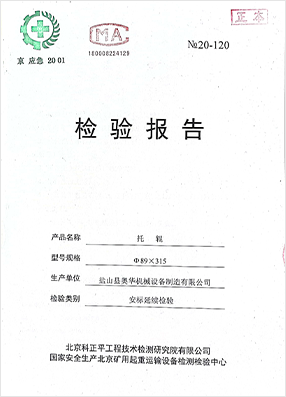 Afrikaans
Afrikaans  Albanian
Albanian  Amharic
Amharic  Arabic
Arabic  Armenian
Armenian  Azerbaijani
Azerbaijani  Basque
Basque  Belarusian
Belarusian  Bengali
Bengali  Bosnian
Bosnian  Bulgarian
Bulgarian  Catalan
Catalan  Cebuano
Cebuano  Corsican
Corsican  Croatian
Croatian  Czech
Czech  Danish
Danish  Dutch
Dutch  English
English  Esperanto
Esperanto  Estonian
Estonian  Finnish
Finnish  French
French  Frisian
Frisian  Galician
Galician  Georgian
Georgian  German
German  Greek
Greek  Gujarati
Gujarati  Haitian Creole
Haitian Creole  hausa
hausa  hawaiian
hawaiian  Hebrew
Hebrew  Hindi
Hindi  Miao
Miao  Hungarian
Hungarian  Icelandic
Icelandic  igbo
igbo  Indonesian
Indonesian  irish
irish  Italian
Italian  Japanese
Japanese  Javanese
Javanese  Kannada
Kannada  kazakh
kazakh  Khmer
Khmer  Rwandese
Rwandese  Korean
Korean  Kurdish
Kurdish  Kyrgyz
Kyrgyz  Lao
Lao  Latin
Latin  Latvian
Latvian  Lithuanian
Lithuanian  Luxembourgish
Luxembourgish  Macedonian
Macedonian  Malgashi
Malgashi  Malay
Malay  Malayalam
Malayalam  Maltese
Maltese  Maori
Maori  Marathi
Marathi  Mongolian
Mongolian  Myanmar
Myanmar  Nepali
Nepali  Norwegian
Norwegian  Norwegian
Norwegian  Occitan
Occitan  Pashto
Pashto  Persian
Persian  Polish
Polish  Portuguese
Portuguese  Punjabi
Punjabi  Romanian
Romanian  Russian
Russian  Samoan
Samoan  Scottish Gaelic
Scottish Gaelic  Serbian
Serbian  Sesotho
Sesotho  Shona
Shona  Sindhi
Sindhi  Sinhala
Sinhala  Slovak
Slovak  Slovenian
Slovenian  Somali
Somali  Spanish
Spanish  Sundanese
Sundanese  Swahili
Swahili  Swedish
Swedish  Tagalog
Tagalog  Tajik
Tajik  Tamil
Tamil  Tatar
Tatar  Telugu
Telugu  Thai
Thai  Turkish
Turkish  Turkmen
Turkmen  Ukrainian
Ukrainian  Urdu
Urdu  Uighur
Uighur  Uzbek
Uzbek  Vietnamese
Vietnamese  Welsh
Welsh  Bantu
Bantu  Yiddish
Yiddish  Yoruba
Yoruba  Zulu
Zulu idler roller
Understanding Idler Rollers A Key Component in Conveyor Systems
Idler rollers play a crucial role in the functionality and efficiency of conveyor systems, which are widely used in various industries such as manufacturing, logistics, and material handling. These rollers are essential for supporting and guiding the conveyor belt, ensuring smooth and uninterrupted operation.
An idler roller is a cylindrical component that is mounted on a support frame and generally does not drive the belt. Instead, it helps to maintain tension, align the belt, and facilitate the transfer of materials along the conveyor system. The design and configuration of idler rollers can vary, depending on the specific requirements of the application. However, their primary function remains consistent to provide support while minimizing friction and wear on the conveyor components.
One of the key advantages of idler rollers is their ability to reduce belt sagging and maintain proper alignment. When a conveyor belt experiences sagging due to weight or improper tension, it can lead to increased wear and tear, reducing the overall lifespan of the system. Idler rollers effectively distribute the weight of the materials being transported, helping to prevent belt misalignment and ensuring a longer service life.
idler roller

Moreover, idler rollers contribute to the efficiency of conveyor systems by facilitating smooth movement. They enable the belt to glide over the rollers with minimal resistance, which is vital for reducing energy consumption. A well-designed idler roller system can significantly enhance the performance of a conveyor, leading to improved productivity and reduced operational costs.
In addition to their functional benefits, idler rollers also come in various types and materials to cater to different operating conditions. For instance, heavy-duty idler rollers are designed for applications that involve transporting bulk materials, while lighter rollers may be used in industries handling lighter products. Common materials for idler rollers include steel, rubber, and plastic, each offering unique advantages based on factors like environmental conditions and load requirements.
Maintenance of idler rollers is another critical aspect that can influence the reliability of a conveyor system. Regular inspection and necessary adjustments can help detect potential issues such as misalignment, wear, or damage early on. Keeping the rollers clean and lubricated will also enhance their performance and longevity, minimizing downtime and repair costs for operators.
In conclusion, idler rollers are integral components of conveyor systems, playing a vital role in supporting, aligning, and facilitating the movement of materials. With their ability to reduce friction, diminish wear, and enhance overall efficiency, idler rollers are indispensable in ensuring the smooth operation of conveyor systems across various industries. Understanding their function and maintaining them properly can lead to improved performance and longevity, making them a worthwhile investment for any business that relies on conveyor technology.
-
Revolutionizing Conveyor Reliability with Advanced Rubber Lagging PulleysNewsJul.22,2025
-
Powering Precision and Durability with Expert Manufacturers of Conveyor ComponentsNewsJul.22,2025
-
Optimizing Conveyor Systems with Advanced Conveyor AccessoriesNewsJul.22,2025
-
Maximize Conveyor Efficiency with Quality Conveyor Idler PulleysNewsJul.22,2025
-
Future-Proof Your Conveyor System with High-Performance Polyurethane RollerNewsJul.22,2025
-
Driving Efficiency Forward with Quality Idlers and RollersNewsJul.22,2025





























